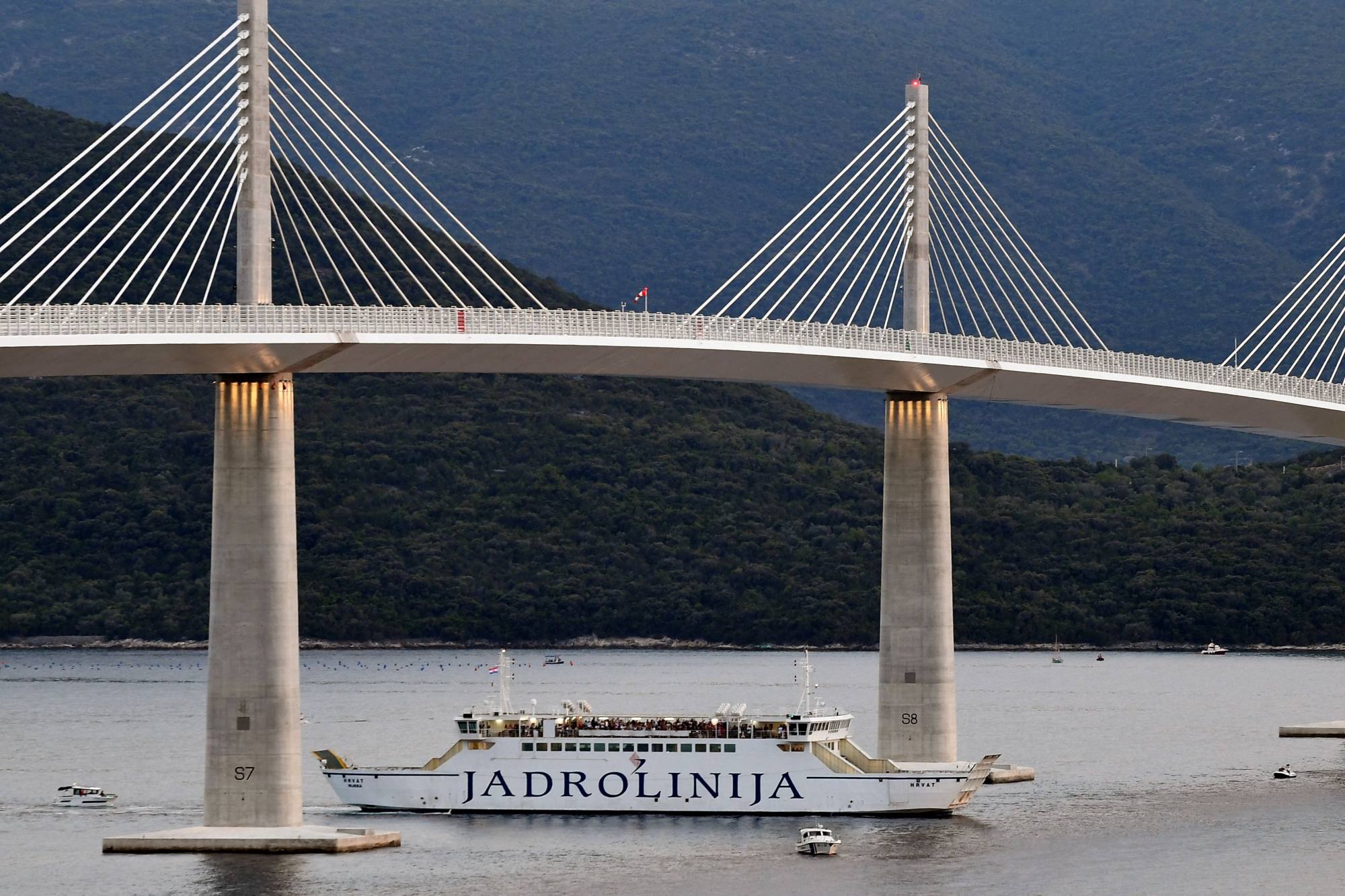
Croatia opens China-built bridge that bypasses Bosnia to get to Dubrovnik – a boon for tourists, businesses and residents
- The Peljesac Bridge allows motorists to bypass a strip of Bosnian territory that cuts the Peljesac peninsula and Dubrovnik off from the rest of Croatia
- Among the Balkan country’s most ambitious projects since its independence, the EU-funded, Chinese-built bridge ends long waits to cross into and out of Bosnia
Croatia celebrated on Tuesday the opening of a long-awaited bridge linking its southern Adriatic coast, including Dubrovnik, with the rest of the country – and bypassing a narrow strip of Bosnian territory.
Braving summer heat, many Croats rushed to be among the first to cross the Pelješac Bridge on foot as it opened for pedestrians ahead of the formal opening ceremony – featuring a speech by Croatian Prime Minister Andrej Plenkovic and a video address by Chinese Premier Li Keqiang – in the evening. It opened to road traffic after the ceremony.
The 2.4km (1.5 mile) cable-stayed bridge, with six pylons for support, reaches out from the Croatian mainland to the Peljesac peninsula, which connects with the southern part of Croatia’s coastline, squeezed between the sea and the Dinaric Alps.
Festivities started early on Tuesday with musical performances and a boat race, while dozens of pedestrians snapped pictures on the bridge.

“It is a major thing for people here since they did not even feel like they were living in their own country,” said Joso Miletic, 75, who travelled from his village near the city of Zadar, on the central coast, to watch the opening of the bridge. “This is the merging of Croatia into a whole.”
The link will bring an end to the untold hours spent by commuters, merchants and tourists at the Bosnian border, and is one of the country’s most ambitious infrastructure projects since Croatia declared independence from Yugoslavia, in 1991.


It was the bloody dissolution of the federation, however, that left a patchwork of divisions across the Balkans, with the frontiers between its six former republics transformed into international borders.

Inhabitants of the picturesque region of red vines, pebble beaches and oyster farms are looking forward to the end of their geographic isolation caused by the Bosnian border. The hours-long waits at the border and fears over missing the day’s last ferry will now become a thing of the past, they say.
“It was really exhausting and made people living here bitter,” Mikulic said.
The opening of the bridge has been a long time coming and not without controversy.
Croatia took its first stab at building the bridge in 2007, only for the project to stall five years later due to budgetary constraints.
In 2017, the European Union – which Croatia joined in 2013 – allocated €357 million (US$360 million), roughly 85 per cent of the cost.
The China Road and Bridge Corporation (CRBC) was selected in 2018 through international tender to build the bridge – marking the first significant Chinese involvement in an infrastructure project in Croatia. In the process, the CRBC also became the first Chinese company to win a bid for a project co-funded by the EU.

In his video address, China’s premier said the completion of the bridge marked a new era of cooperation between Beijing and Croatia’s capital Zagreb. “The bridge also reflects cooperation between China and the EU,” said Li.
But not all were happy with the bridge’s construction, with officials in Bosnia claiming it would hamper its maritime access by preventing high-tonnage vessels from entering its lone port. Zagreb eventually agreed to increase the height of the bridge to 55 metres (180 feet) in an attempt to quell the dispute.

For retired piano teacher Smilja Matic, who has vacationed for years in the Croatian village of Komarna near the entrance to the new bridge, the link to the mainland is a win for locals and tourists alike.
“It means a new life for locals and for people who travel by plane to Dubrovnik, like me. It’s major progress,” she said.
Outside of tourism, the bridge is likely to serve as a boon for businesses and traders as well.
Additional reporting by Associated Press

.png?itok=arIb17P0)